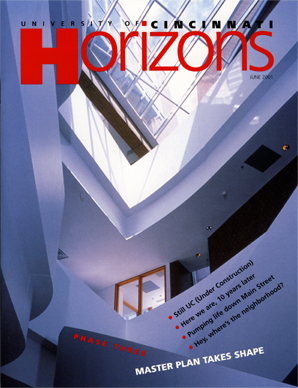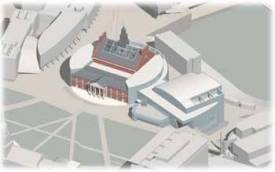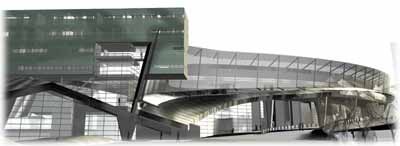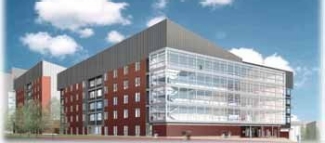University Pavilion
Projected completion date: January 2003
Anchoring the eastern end of MainStreet and replacing the now-leveled Beecher Hall adjacent to McMicken Commons will be University Pavilion, a six-story structure designed to offer one-stop service for all student enrollment and business transactions.
More plainly, University Pavilion will allow a first-day freshman to walk into a single building and walk out after seeing an academic adviser, scheduling classes, paying tuition and applying for financial aid. This customer-centered approach will finally address the most common rap against UC: red tape. The current clumsy system requires students to visit as many as 13 different offices to handle the administrative details of their education.
"University Pavilion will magically transform this place," says Mitchel Livingston, UC's vice president of student affairs and human resources.
University Pavilion will bring together the front-door functions of campus including admissions, enrollment, financial aid, course registration, fee payment, career development, academic advising and disability services. Designed as a welcome mat to campus, the facility will serve as a starting point for tours and will include a university museum, a visitors center complete with large-screen video displays and kiosks for students to access their information.

 Past Issues
Past Issues



